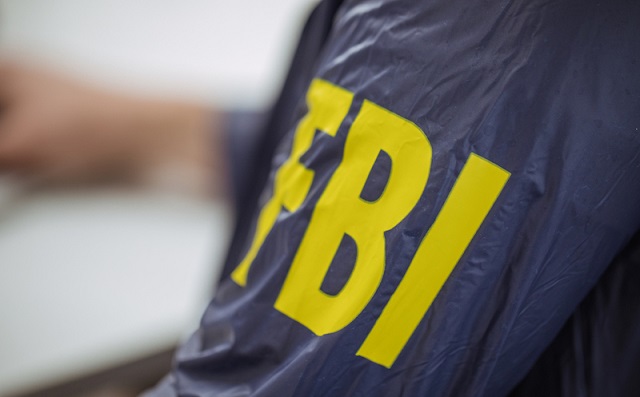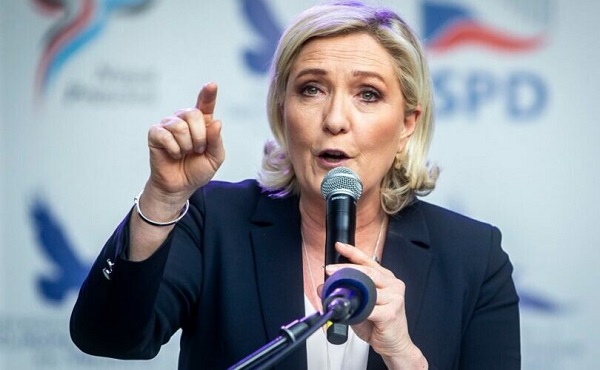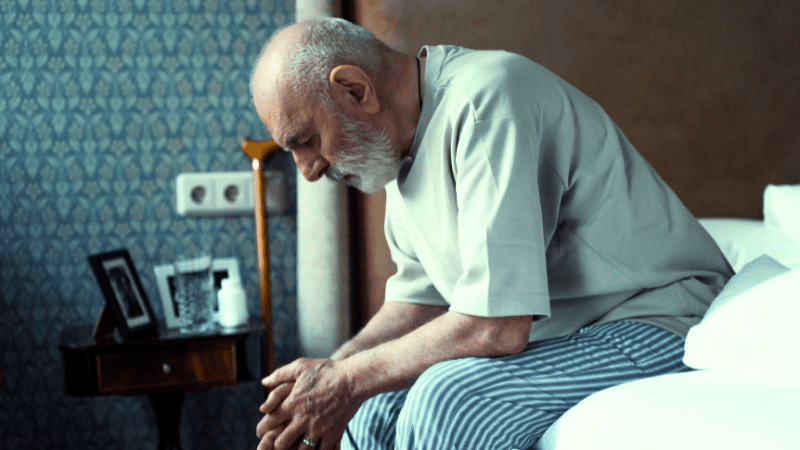Censorship Industrial Complex
Biden FBI to resume colluding with Big Tech after Supreme Court rejects free speech case

From LifeSiteNews
The most dangerous aspect to the issue is the extent to which the government actively encourages private companies to censor disfavored speech, something in which emails, public statements, congressional investigation, leaked documents, and even open admissions have implicated the Biden administration.
The Biden administration’s FBI intends to resume meetings with social media companies on content decisions, a month after the U.S. Supreme Court rejected a bid to stop such coordination as infringing on free speech.
National Review reports that U.S. Department of Justice Inspector General Michael Horowitz’s July 2024 report on the DOJ’s “Efforts to Coordinate Information Sharing About Foreign Malign Influence Threats to U.S. Elections” contains a memo stating that the FBI “will resume regular meetings in the coming weeks with social media companies to brief and discuss potential FMI [Foreign Malign Influence] threats involving the companies’ platforms.”
Horowitz’s report “make[s] two recommendations to ensure that DOJ takes a public and strategic approach to sharing information with social media companies in a manner that protects First Amendment rights to combat foreign malign influence directed at U.S. elections,” ostensibly to build trust with the general public.
The first is to “[d]evelop an approach for informing the public about the procedures the Department has put into place to transmit foreign malign influence threat information to social media companies that is protective of First Amendment rights.” The second is to “[d]evelop and implement a comprehensive strategy to ensure that the Department of Justice’s approach to information sharing with social media companies to combat foreign malign influence directed at U.S. elections can adapt to address the evolving threat landscape.”
For years, conservatives and other dissenters from left-wing orthodoxy have criticized the world’s largest online information and communications platforms, including Google, Facebook, and (until ownership changed hands in late 2022) Twitter, for using their vast influence to slant the news, sources, ideas, and arguments their users see and share through their services. One of their chief rationales for doing so was to prevent “misinformation” from influencing elections, which critics denounce as merely a pretext to sway elections in their favor.
The most dangerous aspect to the issue is the extent to which the government actively encourages private companies to censor disfavored speech, something in which emails, public statements, congressional investigation, leaked documents, and even open admissions have implicated the Biden administration.
Starting under the Trump administration and continuing into the Biden White House, the U.S. Cybersecurity & Infrastructure Security Agency (CISA) and the U.S. State Department’s Global Engagement Center (GEC) have factored heavily into these activities, working with Stanford University and other entities to establish the Election Integrity Partnership (EIP), through which requests to censor “thousands” of conservative posts could be laundered so as to keep the government’s fingerprints off censorship decisions.
The news of the FBI resuming meetings with Big Tech follows the Supreme Court’s 6-3 ruling in June’s Murthy v. Missouri, which concerned whether the federal government “asking” platforms such as Facebook, Instagram, and YouTube to delete objectionable content constitutes government censorship in violation of the First Amendment. Rather than answer that question, the Court’s majority decision written by Justice Amy Coney Barrett ruled that the plaintiffs – the states of Louisiana and Missouri as well as social media users themselves – lacked standing to bring the case.
The court’s three most conservative justices, Samuel Alito, Clarence Thomas, and Neil Gorsuch dissented, writing that “[w]hen the White House pressured Facebook to amend some of the policies related to speech in which [one plaintiff] engaged, those amendments necessarily impacted some of Facebook’s censorship decisions. Nothing more is needed.”
Polls currently indicate a close race between former President Donald Trump and Vice President Kamala Harris, in which many speculate that manipulating what information is allowed to spread on social media could shift a potentially decisive number of votes in states where the gap between the candidates is small enough.
Censorship Industrial Complex
China announces “improvements” to social credit system

 MxM News
MxM News
Quick Hit:
Beijing released new guidelines Monday to revamp its social credit system, promising stronger information controls while deepening the system’s reach across China’s economy and society. Critics say the move reinforces the Communist Party’s grip under the banner of “market efficiency.”
Key Details:
- The guideline was issued by top Chinese government and Communist Party offices, listing 23 measures to expand and standardize the social credit system.
- It aims to integrate the credit system across all sectors of China’s economy to support what Beijing calls “high-quality development.”
- Officials claim the new framework will respect information security and individual rights—despite growing global concerns over surveillance and state overreach.
Diving Deeper:
China is doubling down on its social credit system with a newly issued guideline meant to “improve” and expand the controversial surveillance-driven program. Released by both the Communist Party’s Central Committee and the State Council, the document outlines 23 specific measures aimed at building a unified national credit system that will touch nearly every corner of Chinese society.
Framed as a tool for “high-quality development,” the guideline declares that credit assessments will increasingly shape the rules of engagement for businesses, government agencies, and individual citizens. The system, according to the National Development and Reform Commission (NDRC), has already played a role in shaping China’s financial services, government efficiency, and business environment.
Critics of the social credit system have long warned that it serves as an instrument of authoritarian control—monitoring citizens’ behavior, punishing dissent, and rewarding obedience to the Communist Party. By integrating credit data across all sectors and enforcing a “shared benefits” model, the new guideline appears to entrench, not ease, the Party’s involvement in everyday life.
Still, Beijing is attempting to temper foreign and domestic concerns over privacy. The NDRC emphasized that the system is being built on the “fundamental principle” of protecting personal data. Officials pledged to avoid excessive data collection and crack down on any unlawful use of information.
Censorship Industrial Complex
France condemned for barring populist leader Marine Le Pen from 2027 election

From LifeSiteNews
By Frank Wright
It remains to be seen how long the rule of lawfare can last against the rising demand for popular politics. The globalist remnants across the West are now liberal democracies in name only.
Marine Le Pen, the former leader of the populist French opposition party, has been sentenced to prison and barred from standing for election as president in 2027, following a court ruling against her for alleged financial crimes.
Le Pen is currently leading polls to win the presidential election, being 11 to 17 points ahead of the party of the globalist President Emmanuel Macron.
The ruling Monday on charges of “misuse of EU funds” sees Le Pen, leader of the National Rally (RN) party, facing two years’ imprisonment and a five-year ban on running for elected office. Her lawyer stated she would appeal the ruling.
Speaking a day before the verdict, Le Pen said, “There are 11 million people who voted for the movement I represent. So tomorrow, potentially, millions and millions of French people would see themselves deprived of their candidate in the election.”
She is to address the French nation in a televised statement Monday night.
Party leader Jordan Bardella responded on X, saying, “Today, it is not only Marine Le Pen who is unjustly condemned: it is French democracy that is being executed.”
Bardella has called for “peaceful mobilization” in support of Marine Le Pen, with a petition launched in protest at the “democratic scandal” of her effective cancellation as a candidate.
The RN won 33 percent of the vote in the first round of the 2024 French parliamentary elections, being the single largest party overall. It is prevented from entering government by a “cordon sanitaire” – an agreement between liberal-global and left-wing parties to “firewall” national-populists from power regardless of how many people vote for them.
The same system prevents Germany’s AfD and Austria’s FPO from governing. The AfD won 25 percent of the national vote, and the FPO came first in the Austrian elections – both held last year. More recently, Romanian presidential candidate Calin Georgescu saw his victorious presidential election canceled and him barred from running again, in what was described as a “globalist coup.”
Le Pen’s appeal would suspend the jail sentence and the fine of 100,000 euros – but would not be heard until 2026, effectively sabotaging her preparations for the 2027 election should she win. The ban takes effect when the appeal process is exhausted, meaning Le Pen is free to campaign until her appeal is heard in a year’s time.
The court ruled that Le Pen, whose RN was the single largest party in the recent French parliamentary elections, had misused 3 million euros in EU funds by paying party officials based in France.
She had told France’s La Tribune Dimanche on Saturday that “the judges have the power of life or death over our movement.”
The judges appear to have given her party a death sentence. Eight further RN members and twelve assistants were also found guilty in the same trial.
Elon Musk has warned the move will “backfire,” with globalist house magazine The Economist in agreement that “her sentence for corrupt use of EU funds could strengthen the hard right.” Its report stated, “Barring Marine Le Pen is a political earthquake for France.”
The shockwaves have reached across Europe, and around the world. Italy’s Deputy Prime Minister Matteo Salvini called the court’s ruling a “declaration of war by Brussels,” joining Dutch and Hungarian national-populist leaders Geert Wilders and Viktor Orban in condemnation of the move.
According to commentators, the legal ruling shows that the liberal-global regime is now canceling democracy. Independent journalist Michael Shellenberger said on X of worldwide globalist moves to criminalize its opponents: “This is a five alarm fire.”
Citing the lawfare undertaken against then-candidate Donald Trump, former State Department official Mike Benz described the many examples of the rule of lawfare were “a dagger in the heart of democracy”:
Donald Trump Jr. asked whether the French judiciary are “just trying to prove JD Vance was right” – referring to the vice president’s “blistering attack on European leaders” over their rising censorship and anti-democratic moves. Vance told EU and UK leaders in Munich, “Democracy rests on the sacred principle that the voice of the people matters. There is no room for firewalls. You either uphold the principle or you don’t.”
U.S. political strategist Steve Bannon also referenced populist figures facing legal persecution in his “War Room” rundown of the Le Pen affair today:
The move to legally “firewall” Le Pen has left even her political opponents disturbed, with the ruling Prime Minister Francois Bayrou reportedly “disquieted” by the verdict. Jean-Luc Melenchon, the leader of the left-liberal LFI and a determined political enemy of Le Pen, has said, “The decision to remove an elected official should be up to the people” – not the courts.
Right-populist leader Eric Zemmour, who coined the term “remigration,” warned of a “coup d’etat” of activist judges in 1997 – and said today that “everything has to change” as “it is not for judges to decide for whom the people must vote.”
Laurent Wauquiez of the conservative Les Republicains – who have also refused to work with the RN in coalition – said, “The decision to condemn Marine Le Pen is heavy and exceptional. In a democracy, it is unhealthy that an elected official be forbidden to stand for election.”
It seems this latest example of liberal-global lawfare may even see Le Pen’s party rise in the polls, with a survey today showing two-thirds of all French voters saying her ineligibility would not stop them voting for her RN party.
Nearly half of voters believe she was treated harshly “for political reasons,” with a quarter believing the move to bar her will be a “trump card” for the party overall.
Whether the move “backfires” or not, the message to Western electorates is becoming clear. You can vote for liberals of the left, right, or center – because anyone offering a real alternative will be locked out of power, or locked up in jail.
It remains to be seen how long the rule of lawfare can last against the rising demand for popular politics. After canceled elections, speech crackdowns, and criminalizing their opponents, the globalist remnants across the West are now liberal democracies in name only.
-

 2025 Federal Election2 days ago
2025 Federal Election2 days agoLiberals Replace Candidate Embroiled in Election Interference Scandal with Board Member of School Flagged in Canada’s Election Interference Inquiry
-

 espionage2 days ago
espionage2 days agoU.S. Experts Warn Canada Is Losing the Fight Against PRC Criminal Networks—Washington Has Run Out of Patience
-

 Business12 hours ago
Business12 hours agoTrump threatens additional 50% tariffs on China, urges ‘patience’
-

 Automotive2 days ago
Automotive2 days agoTesla Vandals Keep Running Into The Same Problem … Cameras
-

 Alberta11 hours ago
Alberta11 hours agoProvince introducing “Patient-Focused Funding Model” to fund acute care in Alberta
-

 Business1 day ago
Business1 day agoJury verdict against oil industry worries critics, could drive up energy costs
-

 MacDonald Laurier Institute10 hours ago
MacDonald Laurier Institute10 hours agoRushing to death in Canada’s MAiD regime
-

 Alberta1 day ago
Alberta1 day agoIs Canada’s Federation Fair?




